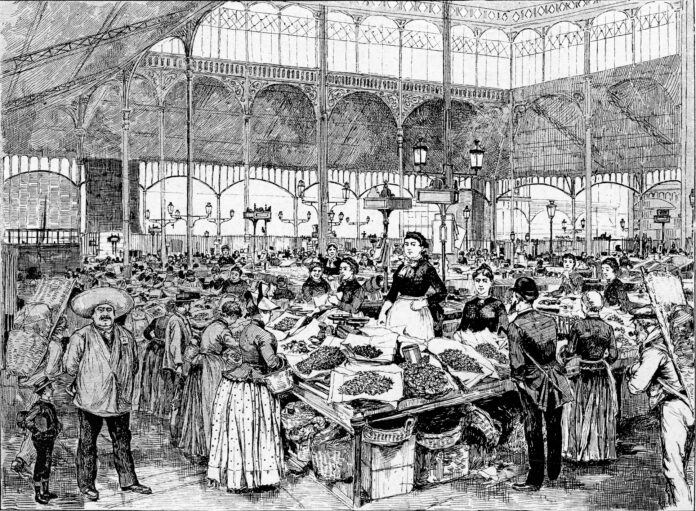Jewish women have been recorded in entrepreneurial roles as early as the fifth century BCE. In fact, up until the 19th century, many held vital roles in their communities’ economies from the Middle East to Europe and the Americas, achieving high levels of wealth and social stature.
Historical Background
Most of the earliest records provide evidence only of prosperous women. This is because deeds and ownership lists were the transactions most often recorded in ancient societies, and it is this kind of information that remains. Such documents, preserved either in stone or on papyrus, reveal women as property owners, philanthropists, and buyers and sellers of real estate or large amounts of movable goods.
One female property owner who lived in antiquity was Mibtahiah, who lived in the Jewish colony of Elephantine. She bought and sold her properties and also owned valuable goods that she disposed of independently. Later records from rural Egypt in the second century CE show Jewish women owning large herds of livestock. Documents from the Cave of Letters, uncovered by archeologists in the 1960s, inform us of Babatha, a contemporary of Mibtahiah, who owned property in Judea and lent money to her husband.
Since poorer women rarely required the use of official documents, fewer details of their economic activities are extant. This gives us a skewed picture of history, since most people weren’t wealthy and left scant evidence behind, regardless of gender or whether or not they were Jewish. However, from the little we know, we can assume that almost all women, from the richest to the poorest, were economically active. Even those who engaged in traditional female jobs like spinning and weaving or growing and preparing food often sold the surplus and thus were entrepreneurs.
Women who hired themselves out as wet nurses may also be considered entrepreneurial, as they performed this service in exchange for money and accepted the responsibilities and risks that went along with that work. It was one of the few ways poor women could earn money without an initial investment, and several extant contracts are witness to the fact that some Jewish women earned a living in this way. One such woman, Theodote of Alexandria, lived in the first century CE and contracted to nurse a slave child for 18 months, receiving half of her money in advance. Another contract revealed a similar agreement with a wet nurse named Marta.
Both the Mishnah and the Talmud, reflecting Jewish life from the first century CE to the sixth century CE, assumed that most women worked. The Sages explained that the proceeds of a married woman’s labor belonged to her husband unless he failed to provide for her maintenance. In that case, she was allowed to use her earnings to support herself.
As such, a woman might be a busy entrepreneur. She could buy and sell the fruits of her own or other women’s labor in the marketplace, acquire estates, plant vineyards, sew garments, either for her family or to sell, and teach other women. All these activities were expected of her in her role as helpmate. In fact, long before the Mishnah and the Talmud laid out the duties of a wife, these activities were all mentioned in Mishlei to describe a woman of valor.
In later centuries, the assumption that women would work and make their own economic contribution to the household became even more entrenched, especially in Europe. In the early tenth century, Rav Meshulam ben Klonymus of Lucca, Italy, one of the founders of the Mainz Jewish community in the Rhineland, pointed out in a responsum: “It is the custom of men to appoint their wives as masters over their possessions.” In the 11th century, Rashi, who lived in Troyes, France, noted that a woman could do four things at the same time: “Watch the vegetables, spin flax, teach a song to a woman for a fee, and warm silkworm eggs” (Rashi Kesubos 66a, s.v. V’shalosh B’arba). At least two of these activities were income-producing.
In Muslim lands, despite the growing isolation of women from the public and working life of the community, there is much evidence that Jewish women worked, most often side by side with husbands but sometimes independently. This was particularly evident in medieval Egypt. While the professional opportunities for Jewish women were much narrower than those available to Jewish or other minority men, they did often function in a variety of occupations.
If the father of a bride was rich or influential enough, an Egyptian Jewish woman’s kesubah might allow her to keep her earnings and use the money to buy her own clothes. Later, in the 16th and 17th centuries, Jewish women in Arabic-speaking areas often had a similar clause in their marriage contracts, stipulating that the profit of a wife’s labor belonged to her and was not the property of her husband. This was one of the factors encouraging substantial commercial activities among the Musta’rab, indigenous, Arabic-speaking Jewish women. Interestingly, in spite of the relatively freer atmosphere for women in Europe, such a clause was never adopted in the marriage contracts of Jews in the West.
East or West, however, the women who appear most frequently in commercial records were widows. Widows often took over their husbands’ businesses, and while this was usually out of necessity, many were successful and even expanded upon the original enterprise. Because a woman usually received the promised payment from her kesubah upon the death of her husband, this might give her a considerable sum of money, a lump sum never available to her while married. Many widows took the opportunity to invest this money, either by lending with interest—a common activity for women, both married and widowed—or as part of a commenda. This was a type of partnership in which a person could invest as a silent partner in someone else’s business with a promise of a share in the profits. Other widows simply continued a skill that they had practiced before such as embroidery, sewing, weaving or other handicraft, and turned it into a business. Widows who couldn’t support themselves usually became the responsibility of the community, and many appear on the charity rolls in every area of Jewish settlement.





















